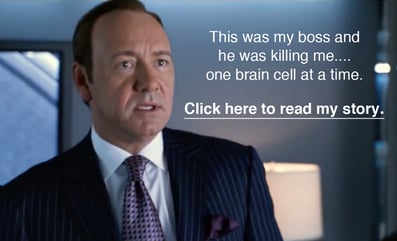If you haven't had the experience of suffering through an incompetent, insecure, or plain old bully of a boss, consider yourself lucky! According to a Gallup study, companies fill management positions with ineffective leaders more than 80% of the time. The odds are high that most of us have a very personal "horrible boss" story.
Bad bosses don't just make the job less enjoyable; they often sabotage employee performance and team dynamics. Gallup has studied performance at hundreds of companies and measured the engagement of 27 million employees and more than 2.5 million work units over the past two decades. Companies of every industry, size and location are struggling to unlock the mystery of why some teams soar while other sink. It turns out that neurochemistry of conversations is often the culprit. And the leader often sets the tone for those conversations.
Which is more effective in improving team performance: using positive feedback to let people know when they’re doing well, or being critical of ideas that may take the team off track? Okay… I admit that this is a little bit of a trick question.
Constructive comments often prevent us from going off into the ditch. But, research indicates that the factor that made the greatest difference between the most and least successful teams is the ratio of positive comments to negative or critical comments participants made to one another. The average ratio for the highest-performing teams was nearly six positive comments for every negative one. The medium-performance teams averaged almost twice as many positive comments than negative ones. But the average for the low-performing teams was almost three negative comments for every positive one.

A critique from a boss or colleague – even constructive criticism carries far more weight to most of us than words of praise or accord. We tend to internalize and remember feeling rejected or criticized far longer than feeling praised or celebrated for our contributions or ideas.
Why do perceived negative comments stick with us so much longer than positive ones? The answer is neurochemistry. Negative feelings like rejection, fear, minimization, and criticism engage the fear/threat center and the amygdala orders up a blast of cortisol which creates an immediate "shut down" of our prefrontal cortex— our "executive brain" that enables strategic thinking, decision making, connectivity with others, creativity, and most of all, trust.This effect can last longer than 24 hours which magnifies the experience and imprints it into memory. The longer we stress over something, the greater the impact.
Positive conversations generate a chemical reaction, too. The positive feelings we experience when we feel like we’re contributing members of a team, that what we do is important, and that we can trust people around us produce the neurotransmitter oxytocin - the chemical that elevates our ability to communicate, collaborate, and connect with others. Unlike cortisol, oxytocin activates neural activity in the prefrontal cortex.
Neurochemistry of conversations has huge  implications in the success or failure of team dynamics. In a recent survey, managers were asked how often they engaged in various positive and negative behaviors. The results were doubled-edged. While most of those surveyed said they demonstrated all five oxytocin-producing behaviors, all five also admitted to all five of the cortisol-producing behaviors. When leaders demonstrate conflicting behaviors, it creates a sense of uncertainty among team members that – you guessed it – generates cortisol.
implications in the success or failure of team dynamics. In a recent survey, managers were asked how often they engaged in various positive and negative behaviors. The results were doubled-edged. While most of those surveyed said they demonstrated all five oxytocin-producing behaviors, all five also admitted to all five of the cortisol-producing behaviors. When leaders demonstrate conflicting behaviors, it creates a sense of uncertainty among team members that – you guessed it – generates cortisol.

The “conversational chemistry” is critical for all of us to be aware of. Conversations that increase cortisol levels reduce our ability to think creativity and strategically as well as our ability to connect with others. In contrast, oxytocin-producing behaviors facilitate thinking, engagement, and collaboration.









